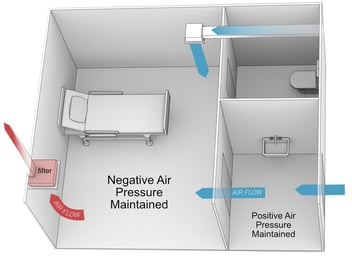Are you ready for USP <800>?
If your enterprise is involved with cytotoxic, cancer-fighting or other “hazardous drugs,” USP 800 is looming.
Are you ready?
On Dec. 1, 2019, U.S. Pharmacopeia’s USP General Chapter 800 is slated to go into effect with requirements that touch on virtually any person or entity in the hazardous drug distribution chain from compounding through patient administration.
Hazardous drugs, according to USP and the National Institute of Occupational Safety, include those that have the potential to cause cancer, reproductive abnormality, embryonic abnormality, chromosomal damage, organ toxicity at low doses as well as drugs that mimic existing drugs in structure or toxicity.
USP proposed the new regulations in March 2014 with the intent “to protect personnel and the environment when handling HDs. This includes but is not limited to receipt, storage, mixing, preparing, compounding, dispensing, administering, disposing, and otherwise altering, counting, crushing, or pouring HDs, and included both sterile and non-sterile products and preparations.” (Emphasis supplied.)
Though a direct causal link between HD exposure and health risks hasn’t been definitively established, the CDC estimates about 8 million healthcare workers are exposed to HDs annually, and it’s the potential long-term risk that has experts concerned.
Hazardous drug sterile compounding is covered in the current USP Chapter 797, but the chapter does not address the administration of those drugs to patients. Chapter 800 closes that loop-hole and liberally expands institutional coverage to a stunning level.Not only will it apply to all persons compounding, storing, transporting and administering HDs, it will impact all areas where those activities occur, to include pharmacies, physician’s offices and clinics, hospitals and other healthcare institutions, research facilities and even veterinary offices.
Further, compounding entities will be required to implement containment measures to “as low a limit as reasonably achievable.”
To meet that requirement, Chapter 800 requires that HD compounding must occur in a negative-pressure environment designed to prevent cross-contamination with a ventilation system that prevents air from hallways and outside areas from intruding into the space. For enterprises where a negative pressure room is impractical, rules will allow containment segregated compounding area (C-SCA) that is externally vented with a minimum of 12 air changes per hour (ACH).
In either case, ACH and air pressure differential monitoring will become a critical component of all entities compounding, storing and administering HDs. Additionally, accurate and comprehensive logging and reporting will be essential to efficient and regulatory compliant operations.
Sonicu’s wireless differential air pressure monitoring delivers a precise solution that provides hospitals, pharmacies and other healthcare enterprises the strict tolerances necessary for monitoring the HD handling and critical care environments. With wireless transmission capability, Sonicu’s pressure monitoring system can be implemented easily without hardwiring back to a central building automation system and activated immediately.
The cloud-based software platform also offers protection against security-breach-induced shutdowns of the primary BAS system, providing ongoing monitoring, alarming and reporting for facilities personnel during a forced takedown.
Providing the proper space and equipment is only half the battle for Chapter 800 compliance. A reliable, precise monitoring, alarming and logging platform is crucial to ensure compliance and safety for the future.




